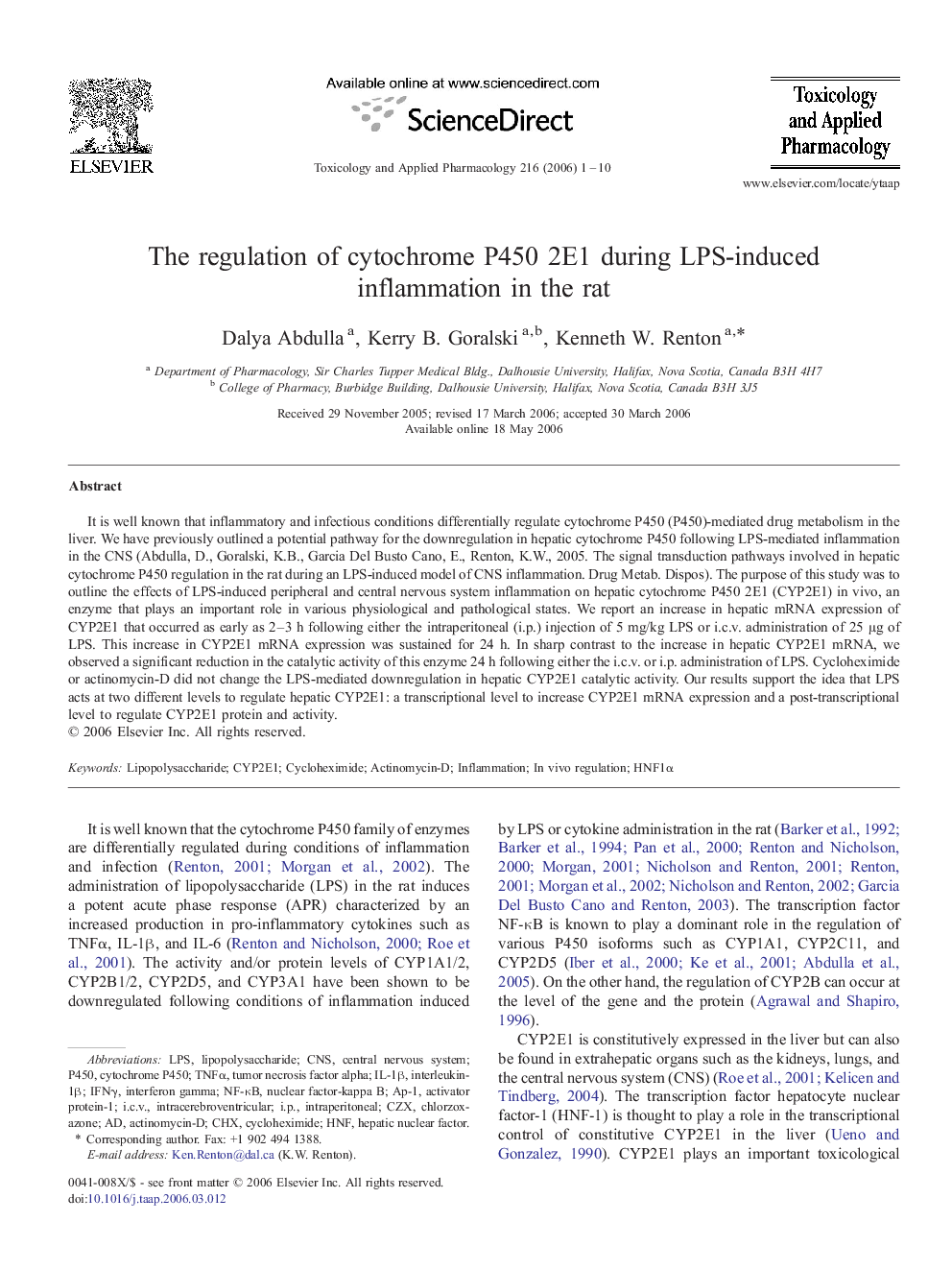| Article ID | Journal | Published Year | Pages | File Type |
|---|---|---|---|---|
| 2572002 | Toxicology and Applied Pharmacology | 2006 | 10 Pages |
It is well known that inflammatory and infectious conditions differentially regulate cytochrome P450 (P450)-mediated drug metabolism in the liver. We have previously outlined a potential pathway for the downregulation in hepatic cytochrome P450 following LPS-mediated inflammation in the CNS (Abdulla, D., Goralski, K.B., Garcia Del Busto Cano, E., Renton, K.W., 2005. The signal transduction pathways involved in hepatic cytochrome P450 regulation in the rat during an LPS-induced model of CNS inflammation. Drug Metab. Dispos). The purpose of this study was to outline the effects of LPS-induced peripheral and central nervous system inflammation on hepatic cytochrome P450 2E1 (CYP2E1) in vivo, an enzyme that plays an important role in various physiological and pathological states. We report an increase in hepatic mRNA expression of CYP2E1 that occurred as early as 2–3 h following either the intraperitoneal (i.p.) injection of 5 mg/kg LPS or i.c.v. administration of 25 μg of LPS. This increase in CYP2E1 mRNA expression was sustained for 24 h. In sharp contrast to the increase in hepatic CYP2E1 mRNA, we observed a significant reduction in the catalytic activity of this enzyme 24 h following either the i.c.v. or i.p. administration of LPS. Cycloheximide or actinomycin-D did not change the LPS-mediated downregulation in hepatic CYP2E1 catalytic activity. Our results support the idea that LPS acts at two different levels to regulate hepatic CYP2E1: a transcriptional level to increase CYP2E1 mRNA expression and a post-transcriptional level to regulate CYP2E1 protein and activity.
